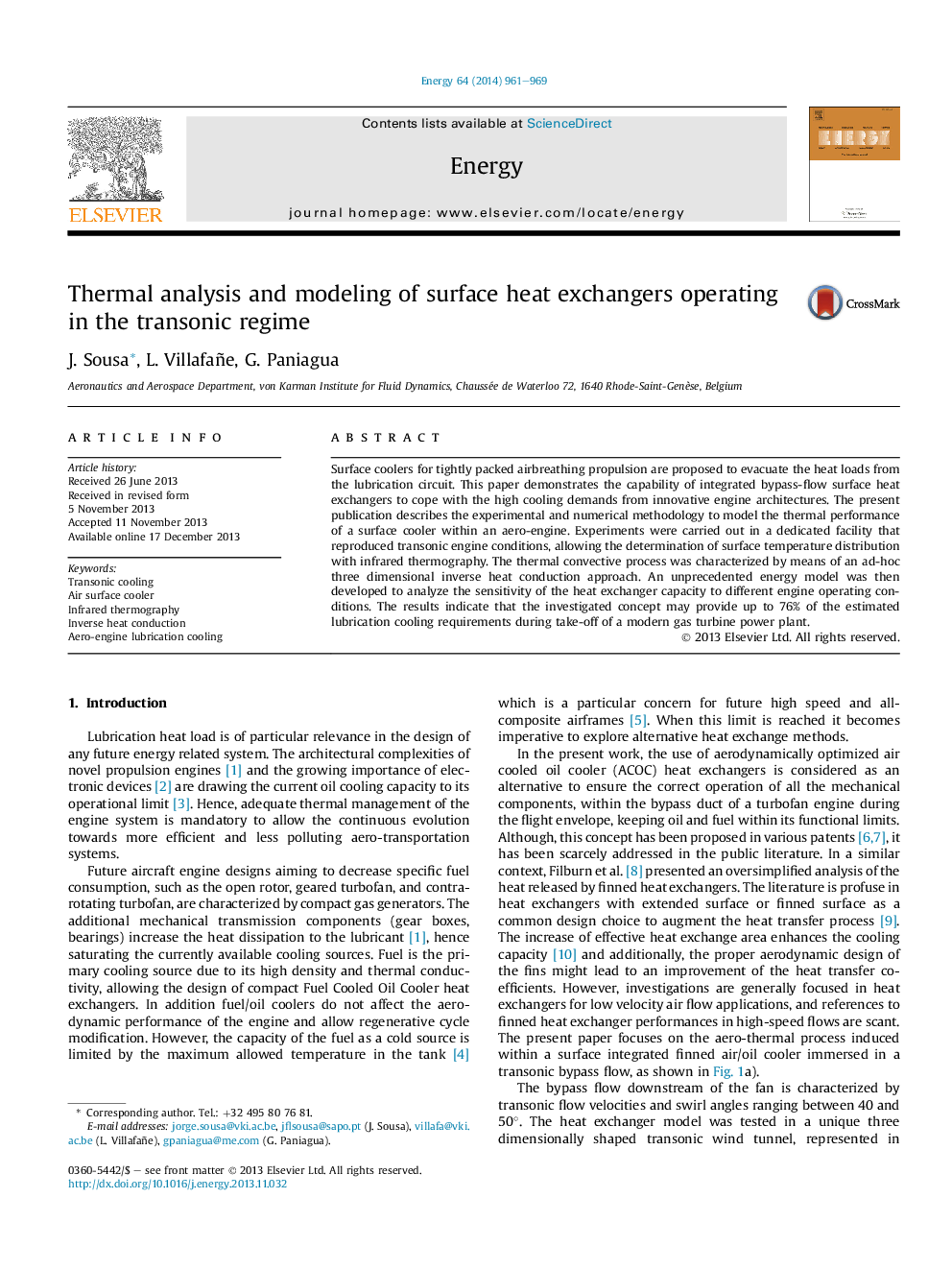| Article ID | Journal | Published Year | Pages | File Type |
|---|---|---|---|---|
| 8078899 | Energy | 2014 | 9 Pages |
Abstract
Surface coolers for tightly packed airbreathing propulsion are proposed to evacuate the heat loads from the lubrication circuit. This paper demonstrates the capability of integrated bypass-flow surface heat exchangers to cope with the high cooling demands from innovative engine architectures. The present publication describes the experimental and numerical methodology to model the thermal performance of a surface cooler within an aero-engine. Experiments were carried out in a dedicated facility that reproduced transonic engine conditions, allowing the determination of surface temperature distribution with infrared thermography. The thermal convective process was characterized by means of an ad-hoc three dimensional inverse heat conduction approach. An unprecedented energy model was then developed to analyze the sensitivity of the heat exchanger capacity to different engine operating conditions. The results indicate that the investigated concept may provide up to 76% of the estimated lubrication cooling requirements during take-off of a modern gas turbine power plant.
Related Topics
Physical Sciences and Engineering
Energy
Energy (General)
Authors
J. Sousa, L. Villafañe, G. Paniagua,
